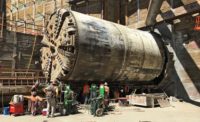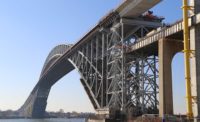In 1999, David White accompanied his father, the founder of American Piledriving Equipment (APE), to Shanghai. Those two weeks set the course of his life and career.

"I fell in love with the newness of everything," White recalls. "So, I ended up wanting to stay there. I came back to Seattle after those two weeks, basically packed my bags, quit my job and moved to China in 2000. I studied Mandarin at Shanghai International Studies University until 2003."
Right around the time White graduated from college in Seattle, APE had its eye on establishing a branch in China. So, White went back to China, found and hired people, and set up the office. "It wasn't but a year after that when I got contacted to drive 72-foot-diameter piles into the ground." The massive steel piles would create the islands for the $10-billion Hong Kong-Macau link.
Chinese designers had previously seen APE drive large-diameter piles and knew it could be done. "The Japanese also had been driving large-diameter piles with vibratory hammers, but they used electric hammers," says White. "They couldn't drive them very far into the ground. APE provided a technical jump—we can get the depths and the power."
APE devised a $20-million system of eight linked vibratory hammers—known as the "Octakong"—that operate in perfect sync. It drove 120 piles, each about 130 ft tall and 665 tons, to create the artificial islands at the core of the 50-kilometer link. Octakong is still being used for other project components.




Post a comment to this article
Report Abusive Comment